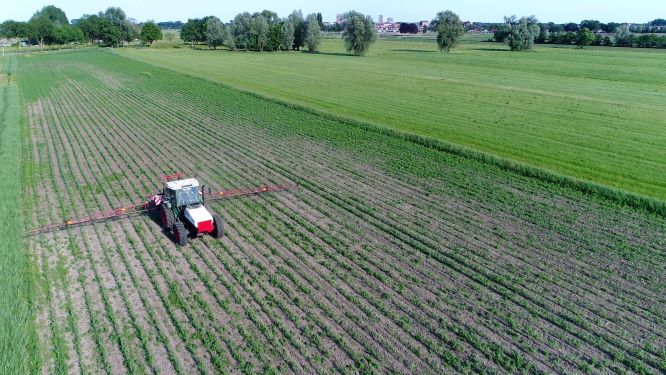Agrochemicals
Growing market for pesticide adjuvants 5th February 2019
By Our editorial team
We look at the rise of organosilicone-based surfactants and green chemistry for pesticide adjuvants, in a global market predicted
We look at the rise of organosilicone-based surfactants and green chemistry for pesticide adjuvants, in a global market predicted to grow at a CAGR of 5.24% over the next 5 years.

Adjuvants are used to enhance the effectiveness of many herbicides, insecticides, fungicides and other agents that control or eliminate unwanted pests. As with medical adjuvants, agrochemical adjuvants are not themselves active ingredients, but rather they modify properties of the final product, generally improving its ability to penetrate, target or protect the target crop.
Among the typical types of ingredients used are surfactants, emulsifiers, oils and salts. Each of these ingredients, and others, modifies the spray solution itself to improve such properties as spreading, penetration, droplet size or other characteristics.
The creative science behind these products is intuitive (the physicochemical properties of adjuvants determine their function and impact upon biological activity) but interesting nonetheless. For example, water-based systems have surface tensions that are too high to permit adequate coverage of many low-energy substrates. As a result, surfactants that function as wetting agents are required – surface tension reduction through the use of a surfactant allows a liquid solution to wet a low surface energy substrate. However, most surfactants cause foam, and the subsequent use of defoamers can result in sub-optimal performance. Therefore, surfactants such as the Surfynol series manufactured by Air Products, include nonfoaming wetting agents. Other key players in the pesticide adjuvant market, according to a recent report by MarketsandMarkets (M&M),1 include Akzonobel, BASF, Croda International, DowDuPont, Evonik, Huntsman, Nufarm and Solvay.
Surfactants remain the most widely used adjuvants in this setting, accounting for the largest share of the global agrochemical adjuvants market.1 In particular, non-ionic surfactants have a significant share of that market, due to their compatibility with a broader range of pesticides.
However, organosilicones are showing the most rapid growth in terms of market share. The special properties of these compounds, notably their extreme spreading and, by virtue of the exceptionally low surface tensions of their aqueous solutions, the ability to induce infiltration of spray formulations into foliage via stomata, are highly desirable. In 1985, Monsanto commercialized the first organosilicone adjuvant, Silwet L-77. More recently, product developments by manufacturers capitalizing on the benefits of organosilicone-based surfactants have created a shift in the manufacturing of adjuvant formulations for the agrochemicals industry. Increasing demand has driven manufacturers to register more than 50 products based on organosilicone surfactants with the US and Canadian governments in the past 5 years.1
Another group of products that is likely to grow in popularity in coming years, reflecting societal and regulatory demands for more sustainable products, are ‘green’ adjuvant solutions. These adjuvants are generally defined as those that are manufactured using renewable raw materials as much as possible while making efficient use of energy (preferably renewable energy), and which have a low human and environmental impact. As one example, adjuvants derived from the pine tree – from which we can derive tall oil fatty acid (TOFA), tall oil and terpene resins – may enhance pesticide performance through bio-based emulsifiers, solvents and stickers. US-based chemical manufacturer Ingevity is just one company maximizing on this resource to deliver sustainable efficiency from naturally-sourced ingredients.
Overall, this expanding market should provide significant return to the companies involved, as the agrochemicals adjuvants market is projected to grow from $3.13 billion in 2018 to $4.04 billion in 2023, at a compound annual growth rate (CAGR) of 5.24%.1 This growth is being driven by constant demands for more efficacious pesticides that leave lower residue levels on crops.
In summary, manufacturers in this space are well set to maximize on a global trend for increased consumption of adjuvants. Those with interests in organosilicones and green adjuvant solutions may be particularly well placed to address growing demands for these ingredients – those without interests in these areas might find it timely to consider their portfolios to ensure they are compatible with their customers’ demands in the future.
Reference



